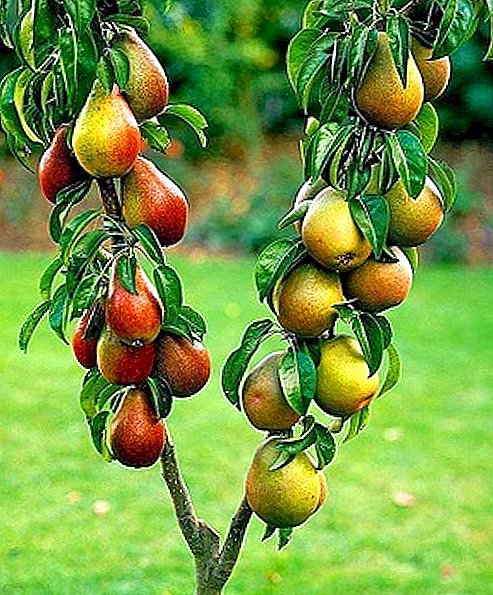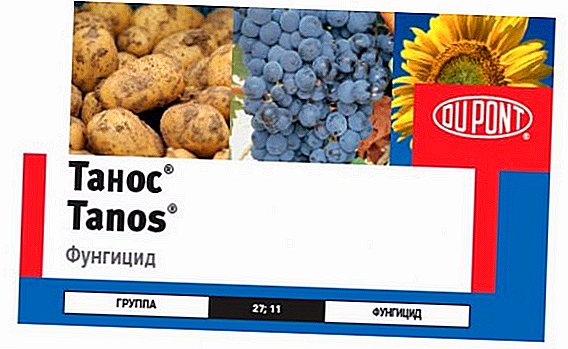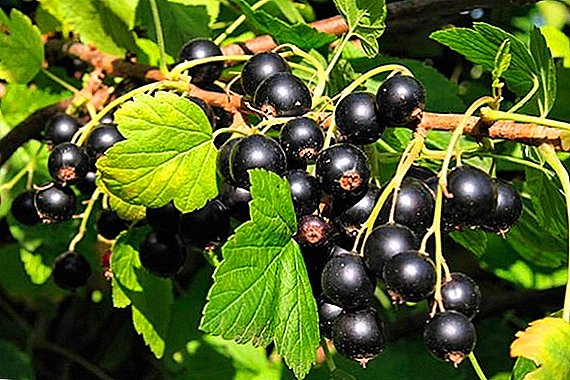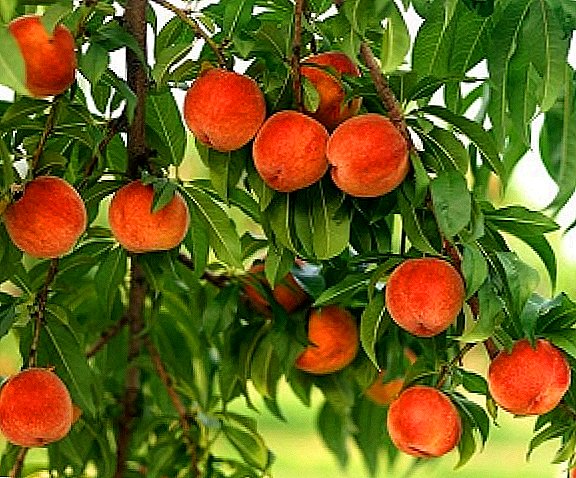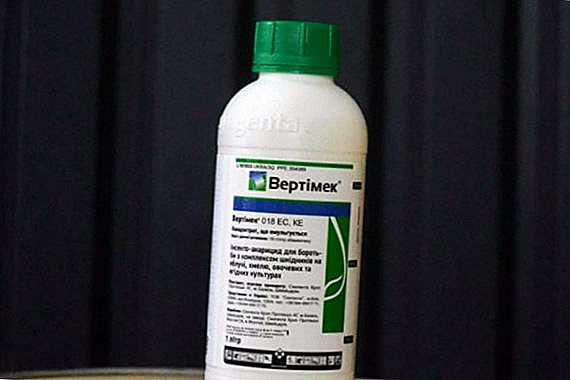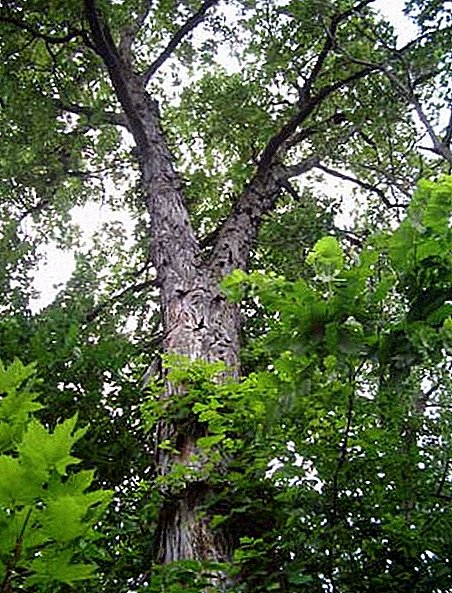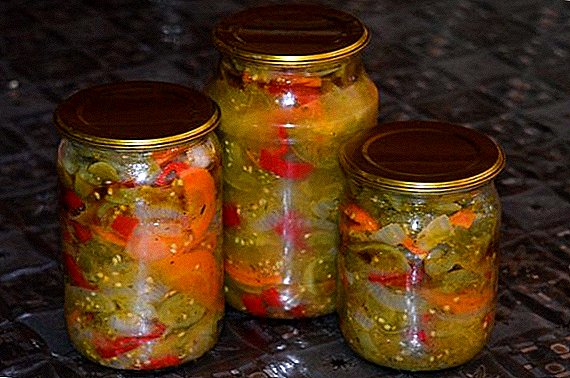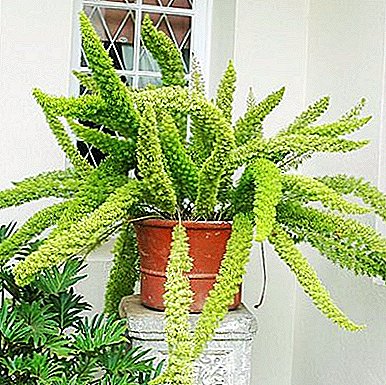
Asparagus Meier is an indoor plant that is unmatched in its beauty.
It has a wide crown and numerous side shoots.
Prefers low temperatures and constant spraying.
Excellent response to fertilizer and fertilizer.
Description
 Asparagus Meier is a capricious houseplant.
Asparagus Meier is a capricious houseplant.
Refers to the form of the Ethiopian Asparagus genus Asparagus. It is the most common subspecies of Asparagus 'Meyeri'. Looks like a grassy branched shrub.
Widely distributed in Europe, South Africa and Asia. In natural and room habitat in height reaches no more than 50 centimeters. It grows in width by 6 meters.
The main branches are straight and even. They can bend under their own weight and lignify at the base roots. In the horizontal position, small lateral shoots depart from the central stems. They densely cover the plant, representing a graceful leafy cladode in the form of numerous "needles".
Due to this arrangement of the side shoots, Asparagus Meier looks like a huge foxtail of the foxtails - phylloclady.
The leaves of all members of the Asparagus family are inconspicuous. Have the appearance of small scales, completely covering the lateral stems. Flowering time falls on June-August.
The flowers are bell-shaped, axillary, amber-white shade. In length reach no more than 5 millimeters. After self-pollination appear oval-rounded berries of burgundy hue. The diameter of the berries varies from 6 to 10 millimeters.
Some photos with Asparagus Meier:


Other common species of Asparagus on our website: Sprenger, Crescent, Cirrus.
Home care
 After purchase, the flower needs close natural seaside conditions.
After purchase, the flower needs close natural seaside conditions.
He needs time to adapt in room conditions.
You should choose a place on a hill or in hanging pots.
The flower needs good illumination, so do not choose the shaded corners of the apartment.
After purchase, the plant is transplanted to wider containers due to its rapidly expanding root system.
Cropping and crown formation
Pruning of this representative flora do not produce. Because of the location of the growth of lateral stems, the duration of which in different circumstances does not exceed 5-10 centimeters, the plant is called non-branched. Therefore, the formation of the tops of Asparagus Meyer to the increase and growth of bushiness will not lead.
In order to improve the ornamentation, diseased, old and bald stalks should be cut at the base of the root system.
Instead of them in the same place grow new, young shoots.
Watering
 Since the spring after a state of rest, ending the autumn period, the soil is constantly kept wet.
Since the spring after a state of rest, ending the autumn period, the soil is constantly kept wet.
To allow stagnation of moisture in the tank is strictly prohibited. When watering must take into account the preferences of ornamental shrub.
Asparagus Meier got used to saline soils. Therefore, it is not recommended to water the plant with hard water containing chlorine impurities.
Otherwise, a lack of calcium will negatively affect the appearance of the dwarf shrub. He will slow down in growth, and his cladodes will begin to turn yellow and crumble.
In winter, watering time must be reduced, letting the top layer of earth dry out.
Planting a plant
For planting, it is necessary to choose wide containers, since the adult plant will have a large number of basal stems. A drainage layer of pebbles or expanded clay is formed on the bottom of the tank. It protects the plant root system from undesirable moisture stagnation. Asparagus Meier likes nutritious loosened soil with an alkaline reaction.
TIP: It is best to use leaf and sod land, humus and sea sand in proportions (2: 1: 1: 1).
Transplanting and feeding
 Plant transplant is made in March-April.
Plant transplant is made in March-April.
Capacity is necessary to choose a larger diameter.
You can not remove the nodules that are formed in the rhizome of the flower. They serve the plant as a source of mineral and nutrients.
An ornamental plant can survive without nodules, but for a long time it will fall ill and stop growing.
Feed the flower during active growth once every 14 days. Well suited store mixes containing mineral and organic fertilizer. The use of purchased fertilizers for flowers or deciduous plants is recommended.
Growing up
This flower is a moody plant. The period of life depends on the conditions of growth. With poor care, the flower may die in 1-3 years. When feeding, proper watering, transplanting into wider tanks, the ornamental shrub lives from 10 to 15 years. It feels great with other indoor flowers.
TIP: For obtaining vertical growth, the representative of flora needs additional support.
Breeding
Reproduction occurs by dividing the bush and planting seeds. Reproduction by seeds is made in the II decade of February - I decade of March. Seeds of black color are scattered on the top layer of the earth and germinated in a self-made greenhouse. In the microclimate constantly maintain a high level of humidity. Growth occurs on the 20-35 day after planting.
Reproduction by dividing the bush year-round. But it is preferable to plant before the start of the growing season. For the excellent survival rate of the rhizome should choose more than three bushes adult Asparagus Meier.
How to grow Asparagus from seed you can find out by watching the video:
Temperature factors
During the growing season, the flower is kept in a cool temperature of 20 to 22 ° C. If it is impossible to create such an artificial regime, then the plant is put to a cold curtained window, taken out to a glazed loggia, greenhouse, any cool shaded place.
The room should be well protected from winds and drafts. In such a room, the flower will be provided with constant natural ventilation. In the winter time he is at rest.
Asparagus requires a temperature of 12 to 15 ° C. Do not exceed the line below 10 ° C, as the planting may freeze.
The flower requires a high rate of humidity. He needs regular water sprays from a spray bottle.
Proper lighting
 Asparagus Meier prefers windows facing east and west.
Asparagus Meier prefers windows facing east and west.
The plant loves bright diffused light, but begins to ache with direct sun exposure.
It dries and mercilessly burns the soft fabrics of cladode.
On the north side, the ornamental shrub will pick up sunlight.
This can adversely affect the decorative stems.
Shoots can become dull, pale, loose, with a loose indent from the trunk of a shrub.
Benefit and harm
The plant is used as a decor when drawing up flower sets. Thanks to the beautiful lush shoots, it gives the bouquet charm and splendor. The picturesque flexibility of the elegant branches looks great in hanging pots.
Asparagus Meier is used as an ampelous plant. Flowering does not cause allergic reactions. In order to avoid poisoning, it should not be eaten by humans and animals. The plant is successfully cultivated in room conditions. It can often be found in the corridors of offices and schools.
Pests and diseases
Asparagus Meier is susceptible to the pest - spider mite, which settles on the leaves of the plant. Ornamental bush negatively transfers branded insecticidal drugs.
When insects appear, the flower is well washed under a stream of warm water of 40 ° C. The session is repeated several times until the complete disappearance of the pests. After that, the plant is sprayed with the drug "Aktellik". The emulsion concentrate is 500 grams per liter of water. Diseases appear after unsystematic improper care.
You can often find a pale stump color, lack of flowering, shedding and yellowing of the cladodes. The reasons may be different: lack of calcium in the ground, excess light, high temperature characteristics, dry air, lack of water.
IMPORTANT: Asparagus Meier does not tolerate pests, dry air and direct sunlight. Prefers rare watering. Propagated by dividing the bush and planting seeds. He likes nourishing loosened soil with an alkaline reaction.



